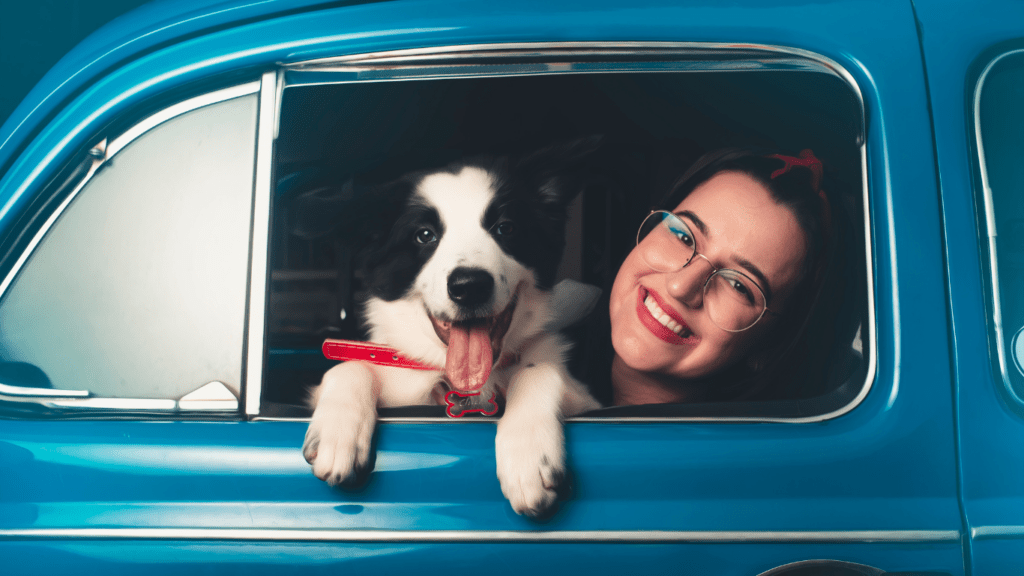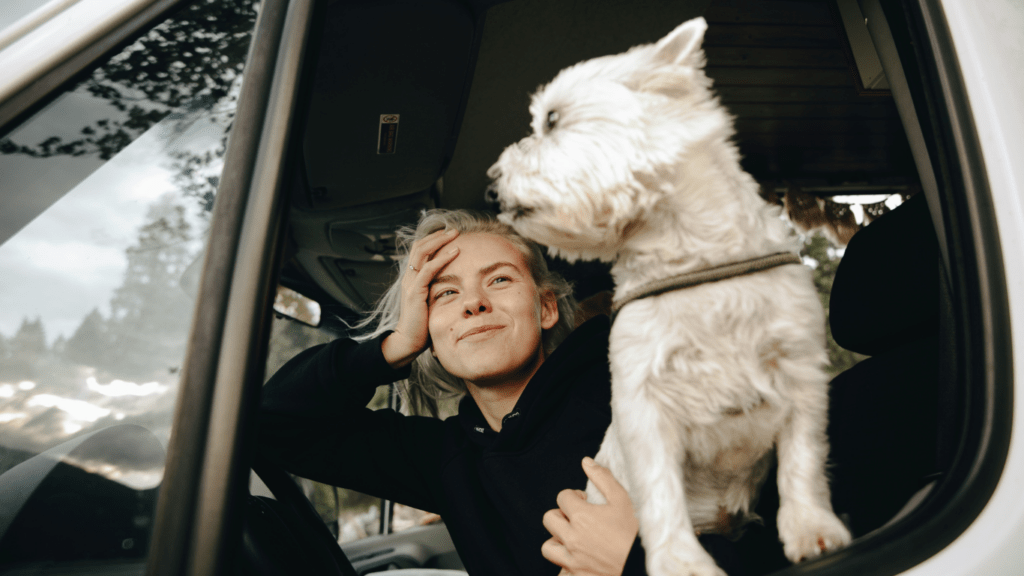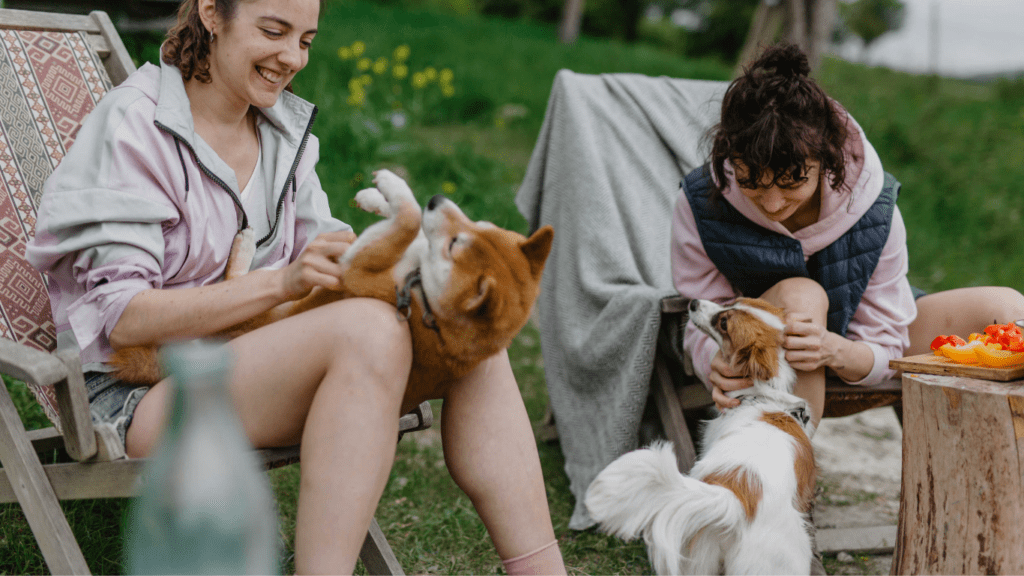The Importance of Pet Safety in Cars
Pets need as much protection as humans during car travel. Injuries can occur from sudden stops or accidents, so securing pets reduces risks significantly. According to the American Veterinary Medical Association, unrestrained pets can become airborne hazards, leading to serious harm for both the pet and vehicle occupants.
Pets can also be distracting if left unsecured. The American Automobile Association reports that pets contribute to over 30,000 accidents annually by diverting drivers’ attention. Ensuring pets are safely restrained helps prevent such incidents, keeping both pets and drivers safe.
Using appropriate restraint systems minimizes injury risks. These systems, which include pet seat belts and carriers, ensure the pet remains in one place during the journey. Research by the Center for Pet Safety and Subaru found that using a crash-tested carrier or harness reduces the likelihood of injury during collisions.
Investing in pet safety in cars extends beyond legal requirements; it’s about ensuring the well-being of beloved companions. Proper restraints can save lives and prevent injuries, making every trip safer for everyone involved.
By understanding the importance of pet safety and implementing these measures, pet owners can ensure a secure and stress-free travel experience.
Understanding the Risks
Pets face various dangers during car travel. Recognizing these risks helps in implementing effective safety measures.
Common Hazards
Unrestrained pets often become distractions. Sudden stops or sharp turns can send them flying, posing risks to themselves and passengers. Additionally, airbags can cause harm if pets are in the front seat. Open windows may tempt pets to jump out, leading to serious injuries.
Potential Consequences
In accidents, unrestrained pets can suffer severe injuries or fatalities. They may also cause harm by becoming projectiles. Distracted driving due to pets results in reduced reaction times, increasing accident likelihood. This endangers both the pet and everyone in the vehicle.
Best Practices for Securing Your Pet

Ensuring pets are securely fastened while traveling is vital for their safety and yours. There are several effective methods to secure pets in cars.
Using Pet Carriers
Pet carriers offer a secure and confined space for pets during car travel. Choose a carrier that allows ample room for the pet to stand, sit, and lie down comfortably. Place the carrier on the vehicle’s floor or secure it using a seatbelt to prevent shifting during sudden stops or turns. Ensure the carrier has proper ventilation to maintain airflow, and line the interior with a soft, absorbent material for added comfort.
Harnesses and Seat Belts
Harnesses and seat belts provide a safe and comfortable way to restrain pets. Select a harness designed specifically for car travel, as standard harnesses might not withstand crash forces. Attach the harness to the vehicle’s seat belt system or use a pet seat belt attachment. Always check the fit to ensure it’s snug but not too tight, allowing the pet to sit and lie down while restricting excessive movement. Harnesses and seat belts prevent pets from being thrown forward during collisions and reduce the risk of injury.
Barriers and Dividers
Barriers and dividers keep pets confined to specific areas within the vehicle. Install a pet barrier between the backseat and the front seats or use dividers to separate cargo areas from passenger compartments. Barriers prevent pets from roaming freely, reducing distractions and minimizing the risk of sudden movements during travel. Ensure the barrier or divider is securely fastened and made from durable materials to withstand the force of a crash.
Properly securing pets in cars is essential for their safety and helps create a distraction-free driving environment. Use pet carriers, harnesses and seat belts, and barriers and dividers to safeguard pets during travel.
Choosing the Right Safety Equipment
Securing pets in the car requires selecting proper safety equipment. Quality matters to ensure your pet’s protection and comfort.
Features to Look For
When picking safety equipment for your pet, focus on several key features:
- Durability: Materials used in pet harnesses and seat belts should withstand force during a crash scenario.
- Comfort: Look for padded harnesses and carriers to avoid discomfort during long trips.
- Fit: Properly fitting equipment minimizes the risk of injury. Measure your pet to ensure a snug fit.
- Ease of Use: Equipment that’s easy to install and remove saves time and reduces hassle.
- Crash-Tested: Choose products tested and certified for crash protection to ensure optimal safety.
Product Recommendations
Several highly rated products cater to pet safety in cars:
- Sleepypod ClickIt Sport Harness: This harness is crash-tested, offering high safety standards. It’s padded for comfort and adjustable for a perfect fit.
- PetSafe Solvit Deluxe Car Safety Harness: Known for its easy installation and padded chest piece, this harness provides both safety and comfort.
- Gunther Heavy-Duty Pet Seatbelt: Durable and adjustable, this seatbelt uses high-quality materials, ensuring reliability during travel.
- Petmate Two Door Top Load Kennel: Ideal for smaller pets, this carrier features durable materials and good ventilation. It secures easily with a seatbelt.
- High Road Dog Car Barrier: This barrier helps keep pets in the backseat, reducing driver distractions. It’s sturdy and easy to install.
With the right safety equipment, securing your pet in the car lets you drive with peace of mind.
Tips for a Comfortable Journey
Ensuring a comfortable journey for your pet makes travel stress-free for both of you. Follow these practical tips to enhance your pet’s travel experience.
Preparing Your Pet
Accustom your pet to the car before long trips. Let them explore the vehicle while it’s stationary. Use favorite toys and treats to make it a positive experience. Gradually increase the length of these sessions. If you’re planning a long trip, ensure your pet has had enough exercise beforehand. Tired pets are generally more relaxed during travel. Keep a travel bag with essentials like water, food, toys, and medication.
Making Stops Along the Way
- Plan regular stops every 2-3 hours.
- Short breaks help your pet stretch, hydrate, and relieve themselves.
- Always use a leash to prevent them from wandering off.
- Avoid giving them large meals before or during travel to minimize motion sickness and discomfort.
- Keep the car well-ventilated but avoid direct airflow onto your pet.
- If it’s hot, never leave your pet alone in the car. Heatstroke can occur rapidly in high temperatures.
- Secure places like rest areas or pet-friendly parks are ideal for these breaks.
- Proper planning ensures your pet remains comfortable and stress-free.



 Pet Travel & Safety Consultant
Jimmy Dixoneser is the go-to expert on pet travel and safety at Pet Paw Shack. He provides valuable guidance on how to ensure pets are safe, comfortable, and stress-free when traveling. From creating checklists for pet-friendly vacations to advising on the best travel gear, Jimmy’s expertise helps pet owners confidently navigate adventures with their pets, whether on the road or in the air.
Pet Travel & Safety Consultant
Jimmy Dixoneser is the go-to expert on pet travel and safety at Pet Paw Shack. He provides valuable guidance on how to ensure pets are safe, comfortable, and stress-free when traveling. From creating checklists for pet-friendly vacations to advising on the best travel gear, Jimmy’s expertise helps pet owners confidently navigate adventures with their pets, whether on the road or in the air.
